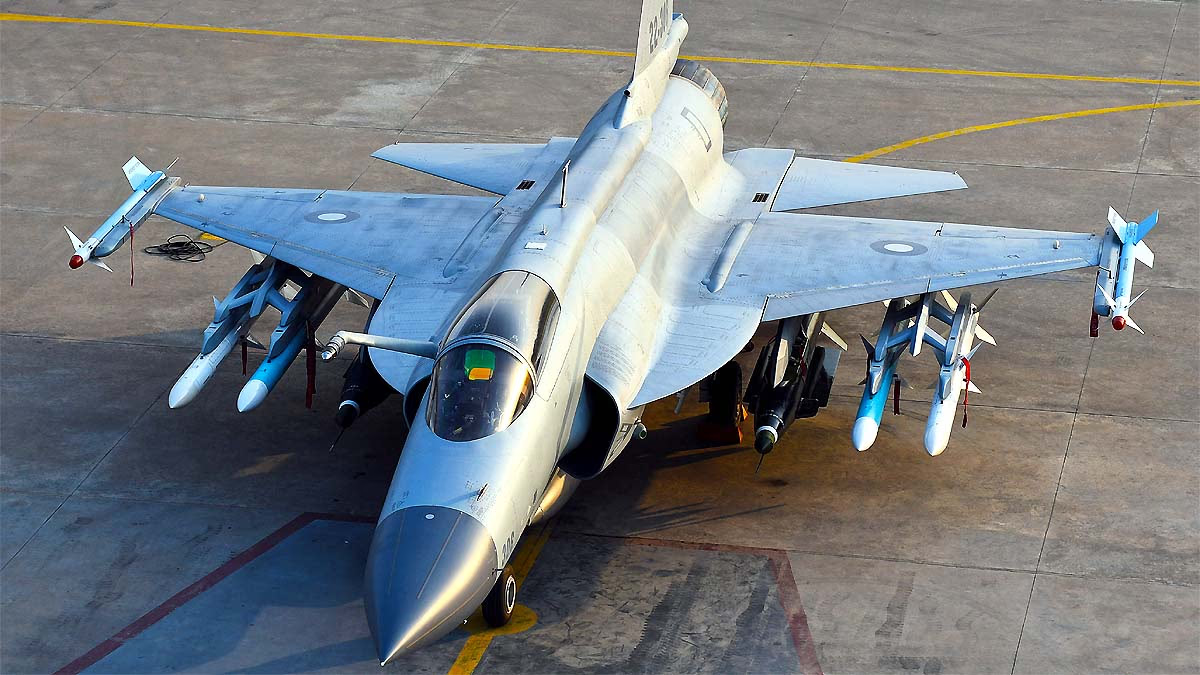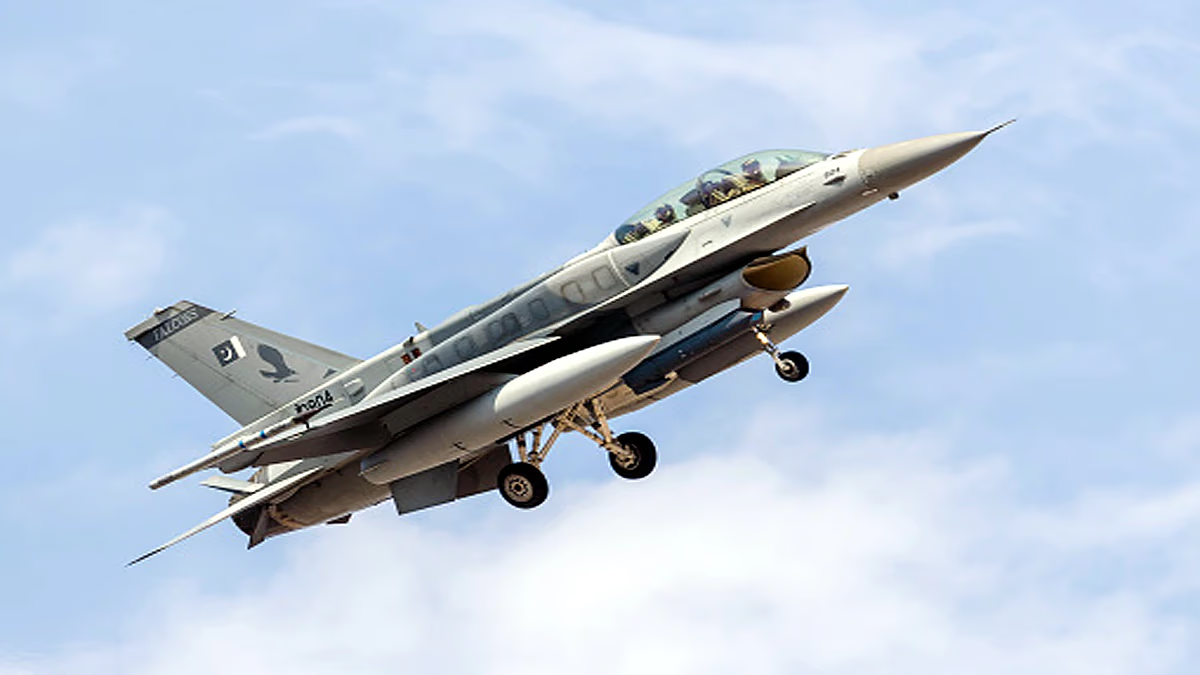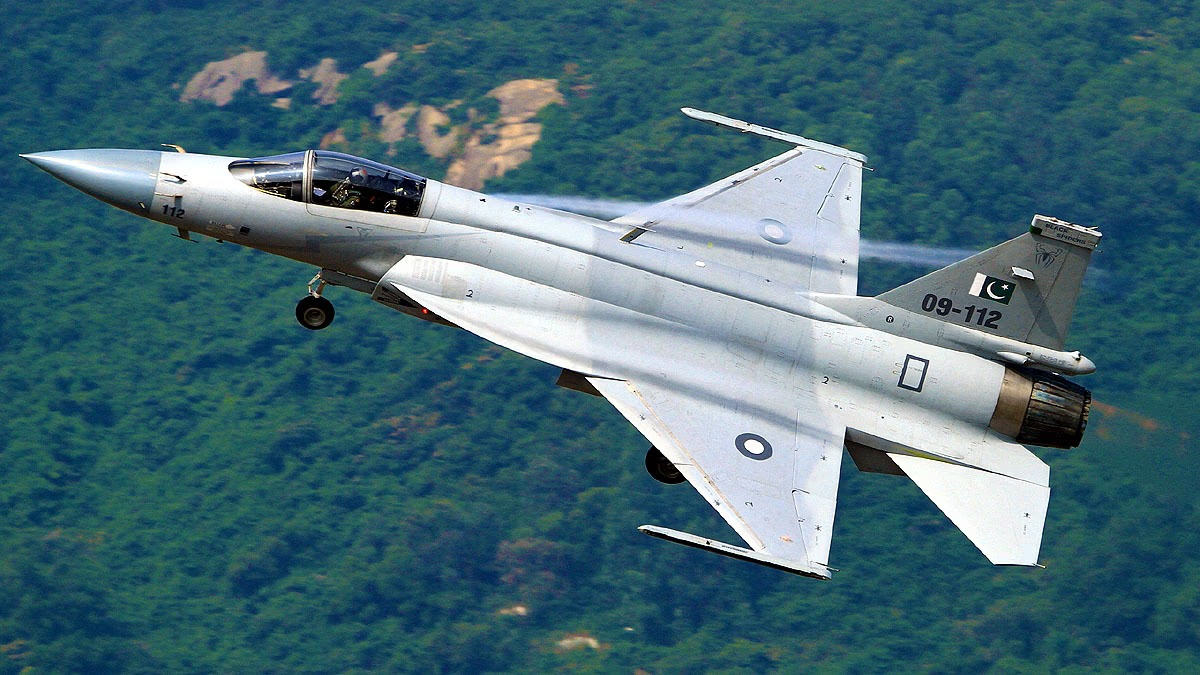An incident involving a Tejas crash in Dubai spurred conversations across social media. Advanced fighter jets from neighboring countries have also encountered mishaps, although not as publicly discussed. Pakistani and Chinese fighter jets are well-known, yet their safety often comes into question.
Pakistan's JF-17 (co-designed with China), along with F-16 and Mirage jets, and China's J-10, J-11, J-15, have faced numerous accidents. Scientific and technical reasons such as engine failures, bird strikes, and mid-air collisions are underlying causes.

Source: aajtak
In contrast, India's Tejas (LCA) has had only two mishaps, both during early development phases, with one incident resulting in the pilot's safe ejection, demonstrating resilience and improvements. If numerous setbacks haven't hindered Pakistan-China jet programs, Tejas surely won't be deterred by a single incident.
Pakistan's Air Force includes both seasoned and newer models. The JF-17 garners much attention, but F-16 and Mirage jets have fallen multiple times. With over 20 accidents since 2000 resulting in more than 10 pilot fatalities, factors such as maintenance lapses, outdated engines, and training errors are predominant.

Source: aajtak
2011 (First Mishap): Crash during a test flight. Cause: Engine failure (Russian RD-93 engine pressure loss). Pilot safe.
2013: Crash during training. Cause: Hydraulic system failure (technical issue). Pilot safe.
2015: Crash during operational flight. Cause: Bird strike stopped engine. No casualties.
2017: Crash during testing. Cause: Software bug (an error in fly-by-wire system). Pilot ejected safely.
2024 (June, Zhang District): Block-2 variant crashed. Cause: Russian engine failure (overheating and mechanical breakdown). Pilot safe, but Pakistan tried to suppress this.

Source: aajtak
1987 (Rawalpindi): Crash during parade rehearsal. Cause: Bird strike. Pilot perished.
2000s: 3 training crashes. Causes: Engine failures and mid-air collisions.
2019 (Post-Balakot): India claimed F-16 downed during dogfight (disputed by Pakistan). Cause: Missile hit.
2020 (Islamabad): Crash during parade rehearsal. Cause: Technical failure (loss of flight control). Wing Commander Nouman Akram perished.
2025 (May, Operation Sindh): India claimed F-16 downing. Cause: BVR missile. (Unconfirmed, but mentioned in reports).
Others: 2-3 mishaps due to maintenance deficiency.
2012 (Zhang): Night training crash. Cause: Engine failure. Pilot perished.
2024 (May): Crash. Cause: Structural crack (old machinery). Pilot safe.
2025 (Rahim Yar Khan): 2 Mirages destroyed by Indian attack. Cause: Missile strike.
Others: 7+ accidents from 2000-2020, mainly mechanical failures and training errors.
Scientific Insights:
JF-17's Russian engine fails in heat due to extensive desert testing in Pakistan. F-16 and Mirage aircrafts experience material fatigue resulting in cracks due to age. Limited maintenance budgets prevent timely part replacements.
The Chinese People's Liberation Army Air Force (PLAAF) jets, although modern, suffer from issues with domestic WS-10 engines resulting in numerous accidents. Since 2000, over 15 mishaps occurred, leading to 5-6 pilot casualties due to engine unreliability and risky training maneuvers.

Source: aajtak
2016 (November): Aerobatic team mid-air collision. Result: Crash.
2020 (October): Crash due to bird strike shutting down the engine. Pilot safe.
2021-22: Crashes near village. Cause: Engine power loss (WS-10A engine failure).
2025 (Myanmar with FTC-2000G, J-10 variant): Crash. Cause: Mechanical failure.
J-11 Flanker (based on Su-27, since the 1990s): Over 3 accidents.
2017 (December): Training crash. Cause: WS-10 engine failure. Captain Huang Peng perished.
2016-18: 2 crashes. Cause: Engine mechanical breakdown (material defects).
Hainan Incident (2001): J-8II (similar to J-11) collided with US plane. Cause: Aggressive maneuvers. Pilot Wang Wei perished.

Source: aajtak
2016 (April, 2 incidents): Training crashes. Cause: Unstable flight control system. Pilot Zhang Chao perished. Grounded for 3 months.
2025 (March, Hainan): Training crash. Cause: WS-10 engine power loss. Pilot safe.
2018: 2 crashes (land and sea). Cause: Technical issues during carrier landings.
Others (J-7/F-7, J-8): 5+ mishaps, such as 2022 (Zhongyang) J-7 crash into houses, 1 fatality. Cause: Loss of control during training mission.
Scientific Insights:
Quality control issues in China's WS-10 engine result in structural weaknesses and inadequate testing, leading to failures due to intense heat during high-speed stratospheric flights. Copying Russian designs (reverse-engineering) incurs inherent problems.
India's HAL Tejas has been operational since 2001, achieving only 2 crashes in over 1200 test flights – an exemplary record.
2024 (March, Jaisalmer): Trainer variant crashed. Cause: Oil pump malfunction (single engine). Pilot ejected safely.
2025 (November, Dubai Airshow): Demo crash. Cause: Control loss during low-level maneuver (investigation ongoing). Wing Commander Naman Syal was killed.
Scientific Insights:
Tejas’ GE F404 engine is reliable, albeit higher risk due to single-engine reliance. HAL utilized lessons from earlier incidents – increased audits and monitoring. The Mk1A variant is enhanced with AESA radar and EW systems.
Comparison: Despite 30+ accidents (70% due to engines) in Pakistan-China jets, their development continues. Despite 5 JF-17 crashes, over 150 were built. Globally, 100+ F-16 crashes haven't stopped 4,600+ from flying.
Tejas’ Strength: Indigenous program with 180 Mk1A orders, Mk2 upcoming. Lessons from mishaps led to increased engine health checks. Indian Air Force did not ground the fleet; operations continue.
Scientific Insight: Each crash treated as 'isolated'. Tejas boasts high safety with fly-by-wire and BVR missiles. Export potential (Malaysia, Argentina) might be affected, yet domestic orders strong.
Crashes in Pakistan and China jets highlight the need for technological improvements. While unfortunate, Tejas' incident will only fortify the program's future.




